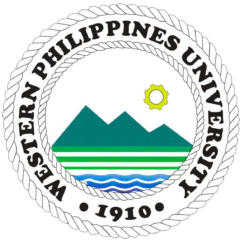![]()
Author/s: Rhea C. Garcellano*, Loida S. Japson and Siote I. Wy
College of Sciences, Palawan State University, Tiniguiban Heights, Puerto Princesa City, Palawan, Philippines
*Correspondence: rgarcellano@psu.palawan.edu.ph
Journal Issue: The Palawan Scientist, Volume 14(1), June 2022, pp. 84-99
ABSTRACT
In this study, the water quality of four coastal areas in Puerto Princesa Bay, with and without informal settlers, were compared in terms of the phytoplankton composition and density, fecal coliform and physicochemical parameters during a 12-month sampling period. Microscopic examination and identification using phytoplankton monographs showed five harmful algal blooms (HABs) genera (Alexandrium, Dinophysis, Nitzschia, Pseudo-nitzschia, and Pyrodinium) with Dinophysis spp. as the most abundant in coastal areas with informal settlers and Pseudo-nitzschia spp. in areas without informal settlers. Eight phytoplankton genera (Coscinodiscus, Proboscia, Rhizosolenia, Skeletonema, Ceratium, Prorocentrum, Protoperidinium, and Oscillatoria) reported to have caused algal blooms were also observed with Coscinodiscus spp. as the most abundant in both groups of coastal areas. Multiple-tube fermentation technique showed fecal coliform count ranging from 4 to >1600 most probable number (MPN)/100 ml in the coastal areas with informal settlers and from <1.8 to 295 MPN/100 ml in areas without informal settlers. Multiprobe measurements showed that both groups of coastal areas have similar physicochemical characteristics with only the dissolved oxygen failing to meet the Philippine standards for class SB waters. There was a significant difference (P < 0.05) in water quality between the coastal areas with and without informal settlers in terms of fecal coliform and the density of four phytoplankton genera (Pseudo-nitzschia, Skeletonema, Alexandrium and Ceratium). However, there is no significant difference in terms of the physicochemical parameters. Regression analysis indicates that the presence of informal settlers could affect water quality in terms of fecal coliform and the five phytoplankton genera (Coscinodiscus, Pseudo-nitzschia, Skeletonema, Alexandrium and Ceratium).
Keywords: blue-green algae, diatoms, dinoflagellates, fecal coliform, physicochemical properties, phytoplankton

This work is licensed under a Creative Commons Attribution-NonCommercial 4.0 International License
| Download Full Paper 1468 Downloads |
